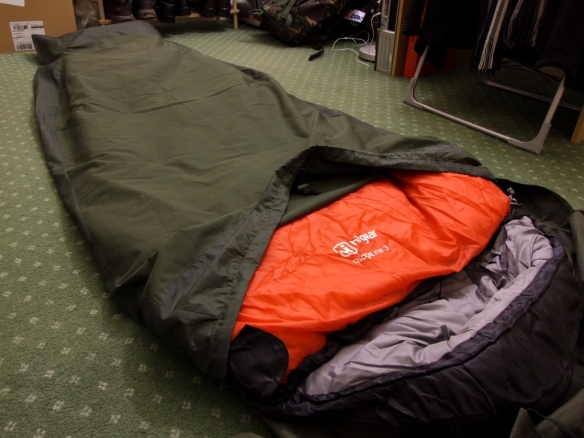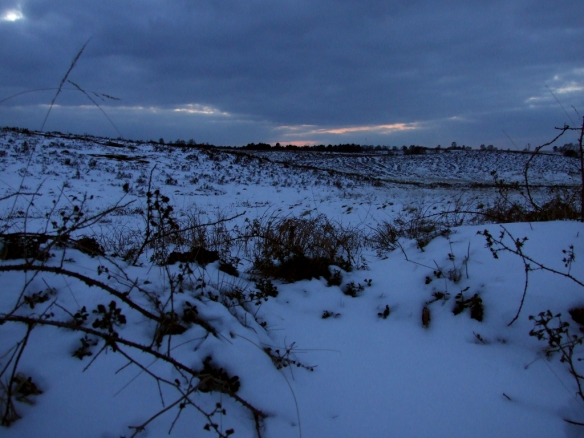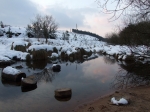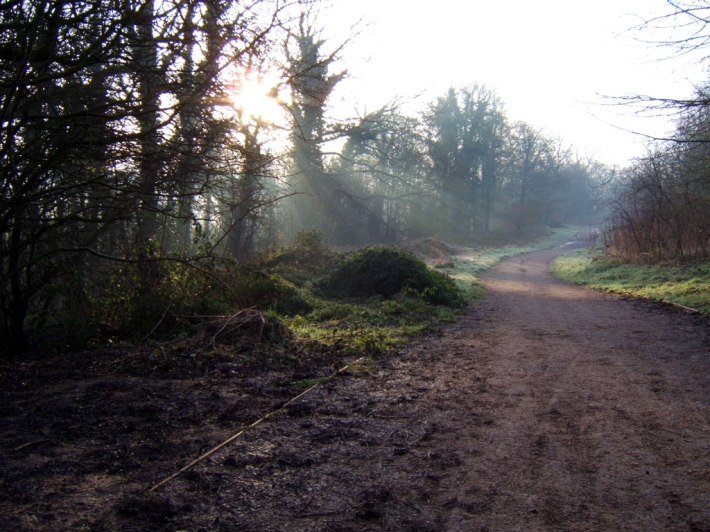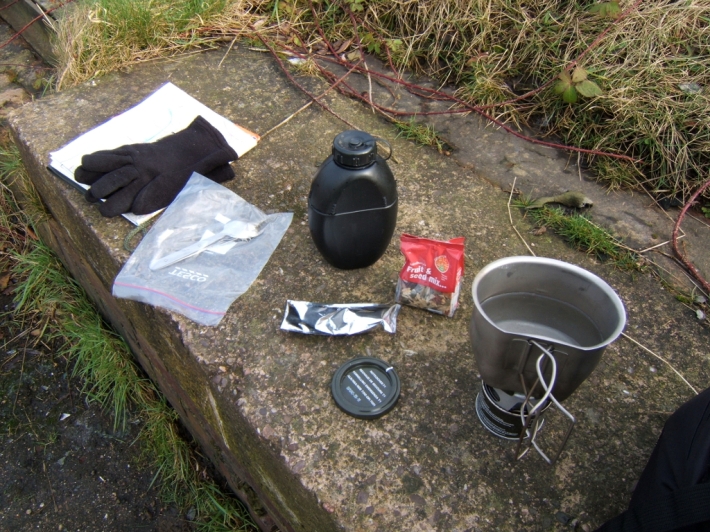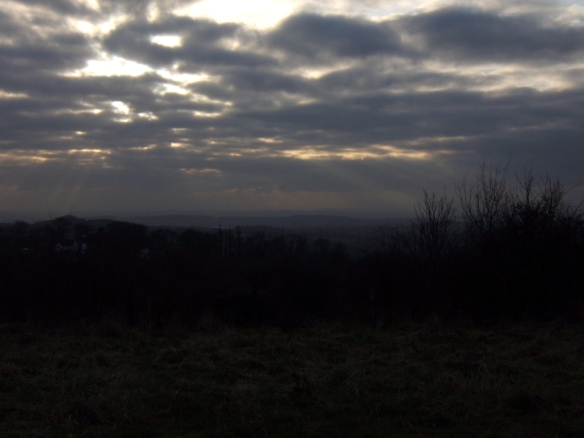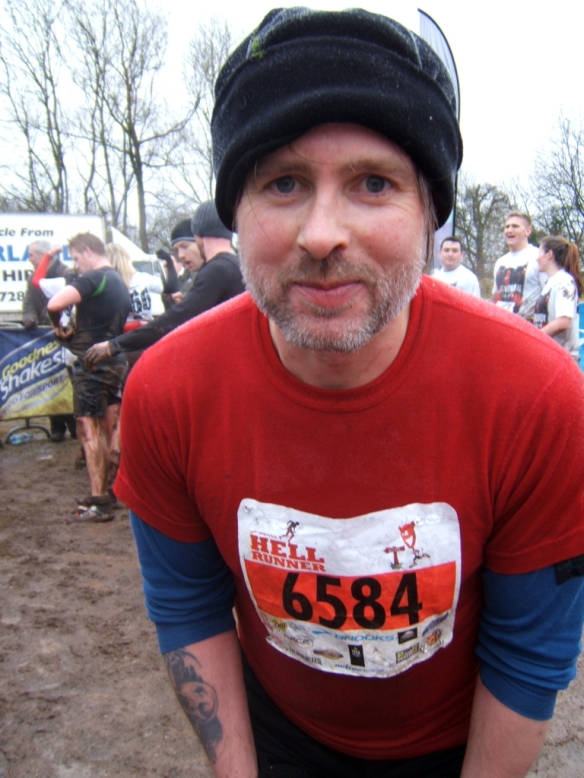The plan for this microadventure was quite simple: start an hour’s drive away at the base of one of Shropshire’s highest hills, summit the aforementioned hill, then walk 7 miles north cross-country to summit one of its neighbours. Upon reaching this goal we (‘we’ being myself and Beppe, my Italian Talitubby lookalike friend) intended to eat, drink, make merry, beat our chests and roar like a couple of bull seals fighting over a prize female. Having got this out of the way we’d bivvy overnight before completing the return journey early next morning, heading straight to work and thrilling our colleagues with tales of derring-do.
All this sounded perfectly straightforward and foolproof, which is just another way of saying that things were bound to – and indeed did – go wrong. Thankfully, serendipity saved the day and the aborted version of this microadventure was probably more enjoyable than a successful run-through. The initial frustration of having a goal thwarted (by circumstances entirely outside our control) soon gave way to humour and I for one was giggling like a demented little monkey on the return journey. All-in-all a firm “thumbs up” for the concept of microadventure!
The start was easy enough, although we arrived in thick fog and it was fairly difficult to locate a clear path to the summit. I decided to improvise a route instead and join the trail halfway up, and after an unnerving scramble up a very steep berm covered in loose rock and soil this was duly accomplished. Visibility at the summit’s trig point averaged about 30ft and my 1:50,000 scale map wasn’t much help in terms of identifying the trail we needed to pick up for the descent down the other side. Of necessity I turned to my compass for assistance, and after taking and walking a bearing for a few minutes the practically non-existent path became a little clearer and more defined.
Strange shapes – golf ball radar installations – loomed out of the fog during the descent, visible one minute, obscured the next. The equipment powering them seemed to emit a low volume/high pitch hum which helped contribute to a rather eerie, surreal atmosphere. The fog lifted about halfway down and the skies began to clear too, so we were provided with a decent view of the valley below and the route ahead. We were shocked at the amount of snow and standing water on the ground. As city boys we simply never imagined that we’d have to battle through snow and snow melt arising from the unseasonably severe weather that hit the UK three weeks’ prior to our trip.
To cut a long story short we set out at 7pm expecting to cover the 7 miles to our destination in no more than 2 hours. It actually took 4 hours and we arrived at 11pm. The extra two hours was spent either skirting round or attempting to climb over (or, more often than not, through) massive banks of snow and pools of standing water. One particularly bad 1km section took 50 minutes to complete. To add insult to injury we subsequently discovered that some clear sections of trail appeared to be the feeding ground for scores of small toads. It was dark by this time and we had to tiptoe around them by torchlight to avoid becoming the perpetrators of an amphibian holocaust.
Upon reaching our destination I immediately brewed up and my friend and I discussed our options. It seemed futile to break out our bivvi bags given that we’d have to set off no later than 2.30am to reach the car and drive back in time for work. It just didn’t seem worthwhile getting our gear out and getting it wet only to pack it all away again a few hours later. Nor did we fancy our chances of actually getting any sleep knowing that we had to get up in a matter of hours. With this in mind, and with some food and a hot drink inside us, we set off at 11.30pm to tackle the snow, water and toads all over again.
Having really pushed myself with a sprint interval session the day before I found the walk back really tiring. I got the giggles at one point while pushing hard on a long, seemingly never-ending incline that loaded my poor calf muscles with what felt like gallons of lactic acid. The discomfort was actually funny – you know how it is when you’re tired. The snowy sections (which we viewed as a damn nuisance on the outbound journey) provided another source of amusement and added to the sense of adventure. By this time it was past 2am and everyone we knew was safe and warm in bed, yet here we were in the middle of nowhere struggling through deep snow with only toads, owls, and the odd sheep for company.
Pausing for a brief break before starting off on the final leg we turned off our head torches and allowed our eyes to become accustomed to the dark. With clear skies the view overhead was simply stunning. So what if we were cold, wet and tired? Dragging ourselves away from this we soon reached our original start point, which once again was draped in thick fog from about the 1,000ft point onwards. Despite a slight navigational hiccup (my bad – always trust the compass!) we got back to the car just after 3am. I crawled into bed two hours later, tired but satisfied with the night’s exertions. And looking forward to a whole two-and-a-half hours’ sleep before work…
More microadventure please!






